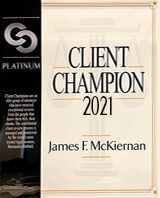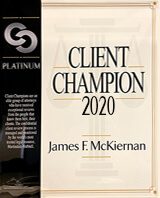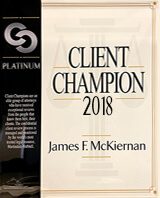I Was Hit by a Car: How Much Money Will I Get?
When you’re recovering from an accident, the last thing you want is a fight with an insurance company. But it’s important to remember their goal is to pay as little as possible. They have formulas and tactics designed to minimize your claim. So when you ask, “I was hit by a car, how much money will I get?” their answer will likely be a lowball offer that doesn’t cover your future needs. This article pulls back the curtain on how a fair settlement is actually determined. We’ll break down the factors that insurance adjusters don’t want you to focus on, giving you the knowledge to stand up for the full compensation you rightfully deserve.
Key Takeaways
- Understand your claim’s full value: A settlement isn’t just about covering bills. It’s calculated to compensate for all your losses, including medical costs, lost income, property damage, and the very real impact of your pain and suffering.
- Protect your case from the start: Your actions immediately following an accident are critical. Strengthen your claim by seeking prompt medical care, documenting everything meticulously, and avoiding common mistakes like admitting fault or posting on social media.
- Don’t assume you have no case if you’re partially at fault: California’s comparative negligence rule means you can still recover compensation even if you share some responsibility for the crash; your final settlement is just reduced by your percentage of fault.
How Is a Car Accident Settlement Calculated?
After a car accident, one of the first questions people ask is, “How much is my case worth?” The truth is, there’s no magic formula or online calculator that can give you an exact number. Every accident is unique, and the final settlement amount depends on the specific details of your situation. The goal of a settlement is to provide fair compensation for everything you’ve lost—physically, financially, and emotionally.
Insurance companies and lawyers look at several key factors to determine a fair value for your claim. These factors include the seriousness of your injuries, the total cost of your medical treatment (both now and in the future), any income you’ve lost from being unable to work, the damage to your vehicle, and the impact the accident has had on your daily life. Understanding these components can help you see how your potential settlement is built piece by piece.
The Severity of Your Injuries
The nature and extent of your injuries are the most significant factors in calculating your settlement. Logically, more severe injuries lead to higher compensation because they have a greater impact on your life. Minor injuries like whiplash or sprains typically result in lower settlements compared to serious injuries like broken bones, spinal cord damage, or traumatic brain injuries (TBIs). A settlement must account for the full scope of your physical harm, including any long-term disabilities, scarring, or permanent limitations that change how you live, work, and enjoy life.
Your Medical Bills and Future Treatment Costs
Your settlement should cover every dollar you’ve spent on medical care because of the accident. This includes current and future costs for emergency care, hospitalization, surgeries, medication, and rehabilitation. It’s crucial to keep detailed records of every bill, from the ambulance ride to physical therapy sessions. If your injuries require ongoing treatment, we work with medical experts to project those future costs so you aren’t left paying out-of-pocket years down the road. This ensures your settlement fully addresses the financial burden of your recovery.
Lost Income and Earning Ability
It’s common to miss work while you recover from a car accident, and your settlement should include compensation for the income you’ve lost. This is calculated based on your pay stubs and employment records. But what if your injuries are so severe you can’t return to your old job, or you can’t work at all? In that case, your settlement can also include compensation for your loss of future earning capacity. This calculation is more complex and often requires input from financial experts to determine the income you would have earned over your lifetime had the accident not happened.
Damage to Your Vehicle
Beyond your physical injuries, your settlement will also address the damage to your personal property, most notably your car. If your vehicle can be repaired, the settlement should cover the full cost of those repairs. If it’s declared a total loss, you are entitled to the fair market value of the car right before the crash occurred. Don’t forget to account for other items that may have been damaged in the accident, such as a laptop, cell phone, or child car seats, as these can also be included in your property damage claim.
Pain and Suffering
Not all losses come with a price tag. “Pain and suffering” is a legal term for the physical discomfort and emotional distress you experience after an accident. This covers the physical pain from your injuries as well as the mental anguish, which can include anxiety, depression, fear, and loss of enjoyment of life. Because these damages are subjective, they can be difficult to put a number on. An experienced attorney can help document your experience and build a strong case to ensure you are fairly compensated for the immense personal toll the accident has taken on you.
What Damages Can You Claim in a Car Accident?
After a car accident, the compensation you can recover is referred to as “damages.” This isn’t just about the cost of fixing your car; it covers the full impact the accident has had on your finances, health, and overall well-being. California law allows you to claim different types of damages to help make you whole again. These are generally broken down into three categories: economic, non-economic, and, in some rare cases, punitive damages. Understanding what you can claim is the first step toward ensuring you receive a fair settlement that truly covers your losses.
Economic Damages: Tangible Financial Losses
Think of economic damages as all the concrete, out-of-pocket costs you’re facing because of the accident. These are the losses that come with a clear price tag and can be proven with receipts, bills, and pay stubs. The goal here is to reimburse you for every dollar the accident has cost you. This includes all of your past and future medical care, from the initial emergency room visit to ongoing physical therapy and prescription medications. It also covers any income you lost from being unable to work, as well as any impact on your future earning ability if your injuries are long-lasting. Of course, the cost to repair or replace your vehicle is also included here.
Non-Economic Damages: Intangible Personal Losses
Non-economic damages cover the personal, human impact of the accident—the losses that don’t have a neat price tag but are just as real. This is where compensation for your physical pain and suffering comes in. It also includes the emotional distress you’ve experienced, such as anxiety, fear, or depression following the crash. If your injuries prevent you from enjoying hobbies, activities, or aspects of life you once loved, that falls under “loss of enjoyment of life.” For severe injuries, this can also include compensation for permanent disability or disfigurement. While it’s difficult to put a number on these experiences, they are a critical part of your claim because they acknowledge the profound personal toll an accident can take.
When Punitive Damages Apply
Punitive damages are different from the other two categories. They aren’t meant to compensate you for a loss but to punish the at-fault party for extremely reckless or malicious behavior. These damages are rare in car accident cases and are only awarded when the defendant’s conduct was particularly outrageous. For example, if the other driver was driving under the influence (DUI) or engaging in a high-speed street race, a court might award punitive damages. The goal is to make an example of the defendant and discourage others from engaging in similarly dangerous actions in the future. Because the standard of proof is very high, these are not a typical component of a settlement.
How Does Fault Impact Your Settlement?
After a car accident, it’s natural to replay the event in your mind. You might even wonder if you did something wrong or could have done something differently. Many people worry that if they were even slightly to blame for the crash, they won’t be able to get any compensation for their injuries. In California, that’s simply not the case.
Understanding how fault is determined is a critical piece of the settlement puzzle. Insurance companies will investigate the accident to assign a percentage of blame to each party involved. This percentage directly influences the amount of money you can recover. Even if an insurance adjuster tries to convince you that you were mostly at fault, it’s not the final word. An experienced attorney can challenge their findings and fight to ensure the blame is assigned fairly, protecting your right to the compensation you need to recover.
What Is California’s Comparative Negligence Rule?
California operates under a legal principle known as pure comparative negligence. This might sound complicated, but the idea is straightforward: you can still recover money for your injuries even if you were partially at fault for the accident. Your final settlement amount is simply reduced by your percentage of fault. For example, if you were found to be 10% responsible for the collision and your total damages were $100,000, you would be able to recover $90,000. This system ensures that you aren’t left with nothing just because you might have made a small mistake.
How Partial Fault Can Reduce Your Compensation
The concept of partial fault means your final settlement is adjusted based on your share of the responsibility. Let’s say you were driving a few miles over the speed limit when another driver ran a red light and hit you. The other driver is clearly the primary cause of the accident, but the insurance company might argue that your speed contributed to the severity of the crash. They could assign you 20% of the fault. This would reduce your potential settlement by 20%. Insurance adjusters often try to shift as much blame as possible onto the victim to minimize their payout, which is why having a lawyer to protect your interests is so important.
Can You Still Get a Settlement If You’re Partially at Fault?
Yes, you absolutely can. This is one of the most important things for accident victims in California to understand. Unlike some other states where you can be barred from recovering anything if you are found 50% or more at fault, California law allows you to seek compensation even if you were 99% responsible for the accident. You would still be entitled to recover 1% of your damages. Never assume you don’t have a case just because you think you might share some of the blame. The best way to understand your rights and what your claim could be worth is to discuss the details of your accident with a personal injury attorney.
What Are Typical Car Accident Settlement Amounts?
It’s the question on everyone’s mind after an accident: “How much is my case worth?” While there’s no magic formula, looking at typical settlement amounts for different types of injuries can give you a general idea. Remember, every case is unique, and these figures are just averages. The final amount depends on the specific details of your accident, the severity of your injuries, and the strength of your legal case. Think of these numbers as a starting point for understanding what might be possible.
Minor Injuries (Whiplash, Bruising)
If you’ve experienced injuries like whiplash, sprains, or significant bruising, your case likely falls into this category. These injuries, while painful and disruptive, generally don’t involve long-term complications or extensive medical procedures. However, they still require medical attention, like doctor’s visits, physical therapy, or chiropractic care. Because of this, settlements for minor injuries often fall in the range of $5,000 to $50,000. The final amount will depend on the total of your medical bills, any wages you lost while recovering, and the degree of your pain and suffering.
Moderate Injuries (Broken Bones, Concussions)
Moderate injuries are more serious and have a bigger impact on your daily life. This category includes things like broken bones, herniated discs, or concussions that require more than just a few weeks to heal. These injuries often demand significant medical treatment, physical therapy, and a longer recovery period, which means you’ll likely miss more time from work. The pain and suffering component of your claim will also be higher, reflecting the greater disruption to your life. As a result, the average payout for these types of injuries can range from $50,000 to $150,000.
Severe Injuries (Spinal Cord, Traumatic Brain Injuries)
When an accident results in life-altering injuries like spinal cord damage, paralysis, or a traumatic brain injury (TBI), the settlement amounts reflect the profound and long-term impact. These injuries often require a lifetime of medical care, rehabilitation, in-home assistance, and assistive devices. They can permanently affect your ability to work and enjoy life as you once did. The financial and emotional costs are immense, which is why settlements can range from $100,000 to several million dollars. Calculating these damages is complex, as it involves projecting future medical needs and lost earning capacity over a lifetime, often with the help of economic and medical experts.
Wrongful Death Claims
Losing a loved one in a car accident is an unimaginable tragedy. In these heartbreaking situations, the surviving family members—such as a spouse, children, or parents—can file a wrongful death claim to seek justice and financial stability. While no amount of money can replace a person, these settlements are intended to cover tangible costs like funeral expenses and lost future income. They also compensate for the profound, intangible loss of companionship, guidance, and support. The average pedestrian accident settlement can provide a baseline, but wrongful death claims often result in settlements exceeding $1 million, depending on the victim’s age, earning potential, and the circumstances of the accident.
How to Maximize Your Car Accident Settlement
After a car accident, it’s easy to feel overwhelmed and powerless. But there are concrete steps you can take to protect your rights and ensure you receive the full and fair compensation you deserve. Taking control of the process starts with a few key actions that can significantly impact the outcome of your claim. By being proactive and strategic from the very beginning, you can build a strong foundation for your case and position yourself for the best possible settlement.
Get Medical Care Immediately
Your health should always be your top priority. Seek immediate medical attention after an accident, even if you feel fine. Some serious injuries, like whiplash or internal bleeding, may not show symptoms right away. Following your doctor’s advice and attending all follow-up appointments is crucial not just for your recovery, but also for your claim. This creates an official medical record that directly links your injuries to the accident. An insurance company will have a much harder time arguing that your injuries aren’t serious or weren’t caused by the crash if you have a consistent history of treatment from a medical professional.
Document Everything
From the moment the accident happens, become a meticulous record-keeper. This evidence is the backbone of your claim. Take photos of the accident scene, your vehicle’s damage, and your injuries. Keep every medical bill, receipt, and record of related expenses. It’s also incredibly helpful to keep a personal journal detailing your daily pain levels, symptoms, and how the injury impacts your life. This documentation provides tangible proof of your losses and helps paint a clear picture of your pain and suffering, which is a critical component of your settlement. The more detailed your records, the stronger your case will be.
Don’t Accept the First Insurance Offer
Soon after the accident, you will likely hear from the at-fault party’s insurance adjuster. They may seem friendly and offer a quick settlement. It’s important to remember that their job is to protect their company’s bottom line by paying out as little as possible. The first offer is almost always far less than what your claim is actually worth. It likely won’t account for future medical needs, lost earning capacity, or your full pain and suffering. Never feel pressured to accept an offer, and don’t sign any documents without first consulting a lawyer.
Partner with an Experienced Personal Injury Lawyer
Trying to handle a car accident claim on your own puts you at a significant disadvantage. An experienced personal injury lawyer understands California law and knows how to counter the tactics used by insurance companies. Your attorney will handle all communications with the insurer, gather the necessary evidence, and ensure all deadlines are met. They can bring in experts to prove the full extent of your damages and will fight to negotiate a settlement that truly covers all of your losses. Having a dedicated advocate on your side allows you to focus on your recovery while we handle the legal complexities and fight for the compensation you deserve.
What Evidence Do You Need for Your Claim?
After a car accident, building a strong personal injury claim is all about proof. The more evidence you can gather to support your story, the better your position will be when negotiating with insurance companies. Think of yourself as a detective for your own case. Every piece of documentation you collect helps paint a clear picture of what happened and how the accident has impacted your life. Keeping organized records from day one can make a significant difference in the outcome of your settlement.
Medical Records and Bills
Your health is the top priority, and the records from your medical care are the foundation of your injury claim. These documents provide concrete proof of your injuries and the costs associated with them. Make sure you keep a detailed file of everything, including bills from hospital stays, doctor’s appointments, physical therapy sessions, prescription medications, and any medical equipment you need. These records directly link your injuries to the accident and are essential for calculating the economic damages you’re owed. Don’t forget to document any out-of-pocket expenses, like transportation costs to and from your appointments.
The Official Police Report
The police report is one of the most important documents in your claim. It serves as an official, unbiased account of the accident created by a law enforcement officer. The report typically contains crucial details like the date, time, and location of the crash, contact information for all parties and witnesses, a diagram of the scene, and the officer’s initial assessment of who was at fault. This report provides a credible narrative that insurance adjusters and lawyers rely on. You can typically request a copy of your report from the law enforcement agency that responded to the scene.
Photos of the Scene and Your Injuries
Visual evidence is incredibly powerful. If you are able to, take photos and videos at the scene of the accident. Capture the damage to all vehicles involved, skid marks on the road, traffic signals, and the surrounding area from multiple angles. These images can help reconstruct the accident later on. It’s just as important to take pictures of your physical injuries throughout your recovery. Bruises, cuts, and swelling can change over time, and photos create a visual timeline of your healing process. This documentation provides tangible proof of the physical pain you’ve endured.
Witness Information
An independent witness can be a huge asset to your case. Eyewitnesses provide a neutral, third-party perspective on what happened, which can be invaluable if the other driver disputes the facts or tries to shift blame. If anyone saw the accident, be sure to get their name and contact information before they leave the scene. A simple phone number or email address is all you need. Their statement can corroborate your version of events and strengthen your claim, making it much harder for the insurance company to argue against the facts.
A Journal of Your Recovery
While medical bills show the financial cost, they don’t show the human cost. Keeping a journal is a simple yet effective way to document the daily impact of your injuries on your life. Write down your physical pain levels, your emotional state, and any challenges you face. Note any sleepless nights, feelings of anxiety, or daily activities you can no longer do, like playing with your children or enjoying a hobby. This journal becomes powerful evidence for your pain and suffering claim, giving a personal voice to the real-world consequences of the accident.
Avoid These Mistakes to Protect Your Settlement
After a car accident, you’re dealing with physical pain, emotional stress, and a lot of uncertainty. It’s a vulnerable time, and a few simple missteps can unfortunately jeopardize the compensation you rightfully deserve. The insurance company for the other driver is looking for any reason to reduce or deny your claim. By being mindful of your actions from the very beginning, you can protect your case and put yourself in the strongest possible position for a fair settlement. Here are the most common mistakes to avoid.
Waiting to See a Doctor
Your health is the absolute top priority after an accident. Even if you feel okay, you need to seek immediate medical attention. Some serious injuries, like internal bleeding or whiplash, don’t show symptoms right away. Delaying a medical evaluation not only puts your well-being at risk but also gives the insurance company an opening to argue that your injuries weren’t caused by the crash. A doctor’s visit creates an official record that connects your injuries to the accident, which is essential for proving your losses. Follow your doctor’s treatment plan exactly—attend all follow-up appointments, go to physical therapy, and fill your prescriptions. This shows you’re taking your recovery seriously.
Admitting Any Fault
In the moments after a crash, it’s natural to be shaken up and even say something like, “I’m so sorry,” out of shock. But you must avoid admitting any fault, even partially. California is a “comparative negligence” state, which means any compensation you receive can be reduced if you were partly to blame for the accident. If you’re found to be 10% at fault, your settlement will be reduced by 10%. Insurance adjusters are trained to use seemingly innocent apologies against you. Stick to the facts when speaking with the other driver and the police. Let the investigation determine who was at fault. Don’t speculate or accept any blame at the scene or in recorded statements.
Posting on Social Media
Assume that the insurance company’s investigators are watching your online activity. It’s a standard tactic, and what you post can absolutely be used against your claim. You might post a photo smiling with family or mention going for a short walk, and an insurance adjuster could twist that to argue your injuries aren’t as severe as you say they are. They can take comments and pictures completely out of context to undermine your case for pain and suffering. The safest course of action is to stop posting on all social media platforms until your case is fully resolved. You should also ask friends and family not to post photos of you or tag you in any posts.
Settling Your Claim Too Quickly
Soon after the accident, you’ll likely get a call from the other driver’s insurance adjuster with a settlement offer. It might seem like a lot of money, especially when medical bills are starting to arrive. However, these initial offers are almost always far less than what your claim is actually worth. Adjusters want to close your case quickly and for the lowest amount possible, often before you fully understand the extent of your injuries and future medical needs. Accepting a quick settlement means you waive your right to any future compensation for this accident. Never accept an offer or sign any documents without first speaking with an experienced personal injury lawyer.
How an Experienced Lawyer Can Help Your Case
After a car accident, the last thing you should have to worry about is fighting with insurance companies and learning the ins and outs of California personal injury law. That’s where we come in. Having a skilled lawyer on your side lets you focus on what truly matters: your recovery. We handle the paperwork, the phone calls, and the legal strategy so you don’t have to. An experienced personal injury lawyer can help you understand the true value of your claim and negotiate a fair settlement on your behalf.
Insurance adjusters are trained to protect their company’s bottom line, which often means minimizing your payout. They might seem friendly, but their goal is to settle your claim for as little as possible. We level the playing field. We know their tactics and how to counter them. From gathering crucial evidence and speaking with witnesses to calculating your total damages—including future medical needs and lost earning potential—we build a comprehensive case designed to secure the maximum compensation you are entitled to. We become your advocate, your voice, and your guide through every step of the legal process.
Our Experience with California Car Accident Claims
California’s traffic laws and insurance regulations have their own unique complexities. Our team has decades of experience working specifically with these laws. We understand how factors like comparative negligence and local court procedures can influence a case. The potential value of a claim can vary dramatically; for example, the average payout for a pedestrian hit by a car in California can range from thousands for minor injuries to millions for catastrophic ones. This is why having a lawyer who knows the local legal landscape is so important. We use our deep understanding of California car accident claims to build the strongest possible case for you.
We Fight for the Full Compensation You Deserve
Insurance companies often try to offer quick, low settlements that don’t come close to covering the true cost of your injuries. They hope you’ll accept it out of desperation without realizing what your claim is actually worth. We don’t let that happen. Our job is to fight for a fair amount that accounts for all of your losses—medical bills, lost wages, vehicle repairs, and the pain and suffering you’ve endured. We aren’t afraid to take on big insurance companies to ensure you receive the full and fair compensation you deserve.
You Don’t Pay Unless We Win
We know that a car accident can put you in a tough financial spot. The cost of hiring a lawyer shouldn’t be another source of stress. That’s why we work on a contingency fee basis. This is our “No Fee Guarantee” to you: you don’t pay us a single dollar unless we win your case. There are no upfront costs or hidden charges. Our fee is a percentage of the settlement or verdict we obtain for you. This arrangement means we are fully invested in your success. Your initial consultation is also completely free, so you can get the answers you need without any financial risk.
Related Articles
- How Is a Car Accident Settlement Calculated? Step-by-Step
- Average Compensation for Being Hit by a Car Explained
- Why You Need a Lawyer for a Car Accident Not Your Fault
Frequently Asked Questions
How long does it take to get a car accident settlement? There isn’t a set timeline, as every case is different. The duration depends heavily on the complexity of your case, the severity of your injuries, and how long it takes for you to complete medical treatment. A straightforward case with minor injuries might settle in a few months, while a case involving serious, long-term injuries could take a year or more. The goal is to wait until we have a clear picture of your future medical needs and lost income to ensure your settlement is truly fair, rather than rushing to a quick but inadequate conclusion.
Will I have to go to court to get my settlement? Most personal injury cases are settled out of court. The vast majority of claims are resolved through direct negotiation between your attorney and the insurance company. Filing a lawsuit is sometimes a necessary strategic step to show the insurer that you are serious about getting what you’re owed, but it doesn’t automatically mean you’ll end up in a trial. Our goal is always to secure a fair settlement for you as efficiently as possible, and a courtroom trial is typically a last resort.
What if the driver who hit me doesn’t have insurance? This is a stressful but surprisingly common situation. If the at-fault driver is uninsured or doesn’t have enough insurance to cover your damages, you may be able to file a claim with your own insurance company through your Uninsured/Underinsured Motorist (UIM) coverage. This is a specific part of your policy designed to protect you in exactly this scenario. We can review your policy to determine your options and help you pursue compensation through the proper channels.
Why shouldn’t I just accept the first offer from the insurance company? Insurance adjusters are trained to settle claims for the lowest amount possible, and their first offer is almost always a lowball figure. This initial amount rarely accounts for the full scope of your losses, especially future medical bills, long-term pain, or the total income you might lose. Accepting it means you give up your right to seek any further compensation for the accident. It’s best to view the first offer as the start of a negotiation, not the end.
How is my percentage of fault actually determined? An insurance adjuster will investigate the accident to assign a percentage of fault to each driver. They do this by reviewing the police report, analyzing photos of the scene and vehicle damage, and considering statements from you, the other driver, and any witnesses. They may try to shift as much blame as possible onto you to reduce their payout. Our role is to build a strong case with evidence that shows the true story and challenge any unfair assignment of fault to protect your right to full compensation.














